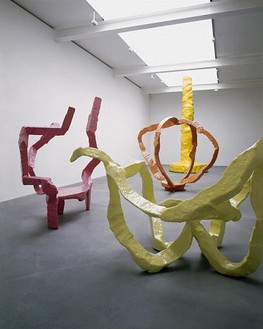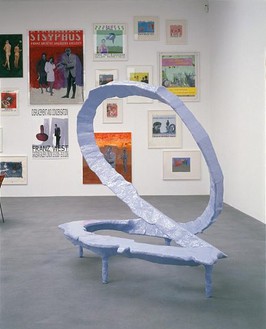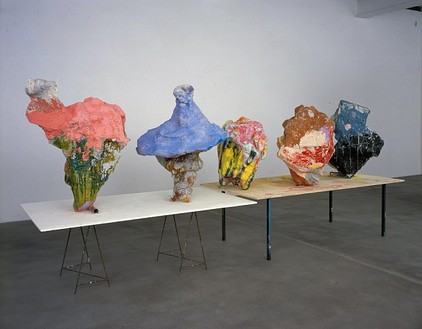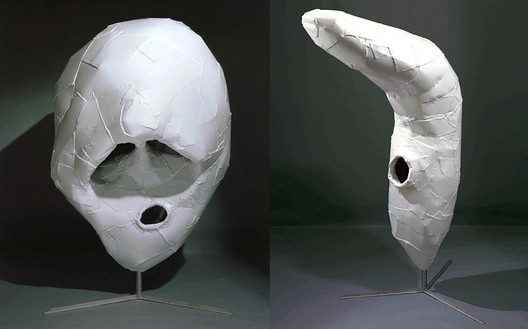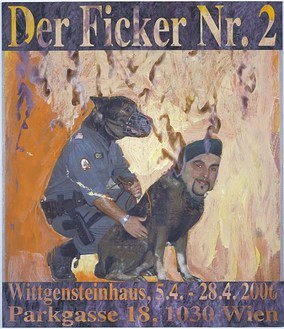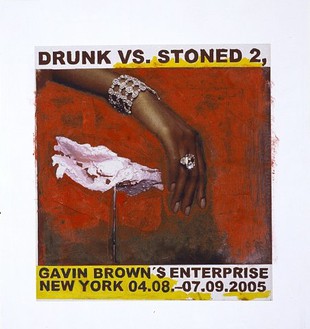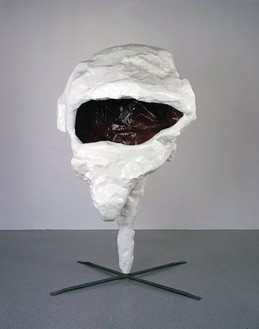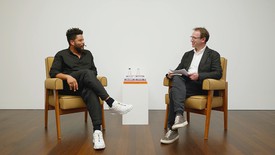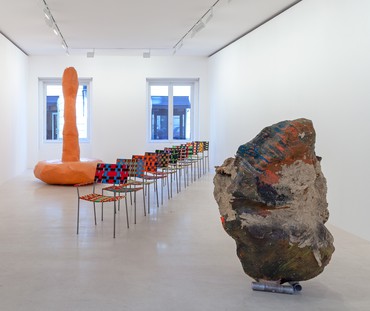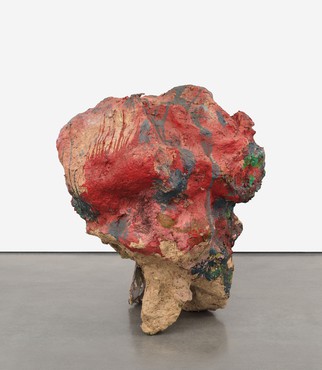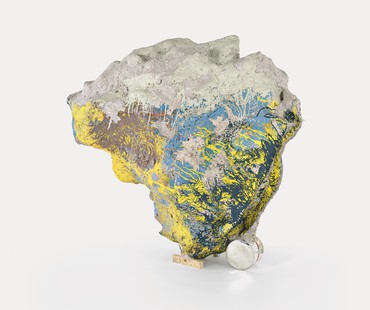About
Gagosian is pleased to announce an exhibition of new works by Franz West. The exhibition will include many of West’s signature pieces, including furniture (new tables, chairs and lamps), collages, papier-mâché sculptures, aluminum sculptures and a new form of sculpture made of polyester.
Franz West belongs to a generation of artists influenced by action and performance art of the 1960s who rejected the passive nature of viewing and making art, as well as the ritualistic activities of the Viennese Aktionisten group of the 1960s–’70s, who used the body to trigger cathartic experiences. In the early 1970s, West began making a series of small, portable sculptures called Passstücke (Adaptives), plaster objects that were completed as artworks when the viewer picked them up, wore them or carried them around. In many ways his later works are versions of these, setting in motion a variety of bodily attitudes and positions, which transform public spaces into sociable environments for viewing art.
The colorful amorphous forms of West’s new sculptures combine characteristics of physical, psychological and mystical worlds. Using materials that refuse conventional aesthetic connotations, West magnifies basic shapes and simple sculptures. In the new group of outdoor polyester sculptures, the artist uses a single colour to cover the uneven surfaces; with their looping arches and colourful forms these sculptures blur the boundary between art and bodily experience, and also between the artist and contemporary media. Such handmade, “anti-sculptures” reject traditions of the sublime and the monumental in twentieth century sculpture, and are works that the viewer can have a personal, physical and tactile encounter. West also incorporates furniture into the exhibition, asking the viewer to engage, sit and relax within the sculpture.
A fully illustrated catalogue, including a conversation between the artist and Sarah Lucas and an interview with Benedikt Ledebur, will accompany the exhibition.
